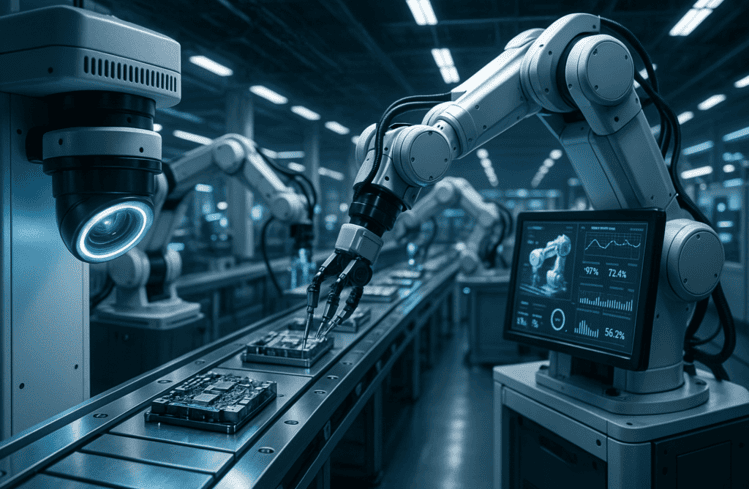In today’s fast-paced manufacturing environment, vision systems are becoming the cornerstone of efficiency, accuracy, and innovation. From quality control to automated guidance, these systems—powered by advanced AI technologies like Claude AI, Google Gemini, and Character AI—are revolutionizing the way factories operate.
What Are Vision Systems in Manufacturing?
Vision systems are camera-based solutions paired with intelligent software that inspect, analyze, and guide processes in real-time. Think of them as the “eyes” of automated manufacturing. Brands like Tesla (NASDAQ: TSLA) and Microsoft are already integrating these technologies into their production lines, ensuring higher quality standards while reducing manual labor.
Key Benefits of Vision Systems
- Improved Quality Control – By identifying defects instantly, vision systems prevent faulty products from reaching customers.
- Faster Production – They work 24/7, accelerating workflows without compromising accuracy.
- Cost Savings – Reduces waste and labor costs, boosting ROI for companies like Amazon and Salesforce.
- Data-Driven Insights – Integrating AI models such as AI image generators helps manufacturers make predictive adjustments.
For example, using AI-powered inspection, a robot can detect micro-defects invisible to the human eye, enhancing precision in electronics manufacturing.
Real-World Applications
- Automotive Industry – Brands like Tesla use vision systems for autonomous vehicle assembly checks.
- Pharmaceutical Production – Ensures packaging accuracy and safety compliance.
- E-commerce Logistics – Companies like eBay Motors use AI vision to verify product authenticity.
The Future of Vision Systems
As tech companies innovate, expect deeper integration with platforms like Discord, Uber, and Blue Sky Social for real-time reporting and analysis. The combination of AI vision and IoT will create smarter factories capable of self-diagnosing production issues before they occur.
